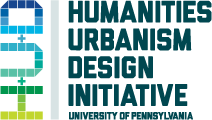Coursework
HSOC 405/605: The Lazaretto, the City, and the World-Public Health, Immigration, and Urban Growth, 18th-21st C.
Spring 2022
H+U+D ANCHOR INSTITUTION SEMINAR
Description:
Philadelphia’s Lazaretto quarantine station was built in 1799 to protect the city after a series of catastrophic yellow fever epidemics. In its time, the Lazaretto was a gateway through which goods and people from many regions of the world passed before entering Philadelphia (sometimes after temporary detention). This course uses the Lazaretto as a gateway to the history of American public health, immigration, and urban growth. Our exploration of those histories is not limited to events that happened at the Lazaretto, nor to the period of its quarantine operations (1801-1895), nor even to Philadelphia, but rather uses the very local and very human stories of this unusual site as a point of entry into larger American and global stories. Coursework includes site visits to the Lazaretto and to a variety of local partner institutions, including the Historical Society of Pennsylvania, the Mutter Museum, Puentes de Salud, and Sayre Health Center. Students undertake extensive research projects covering some combination of the course’s themes, including discussions of how historical interpretation can facilitate and enhance public engagement and activism.
Instructors:
David Barnes, Associate Professor, History and Sociology of Science (SAS)
